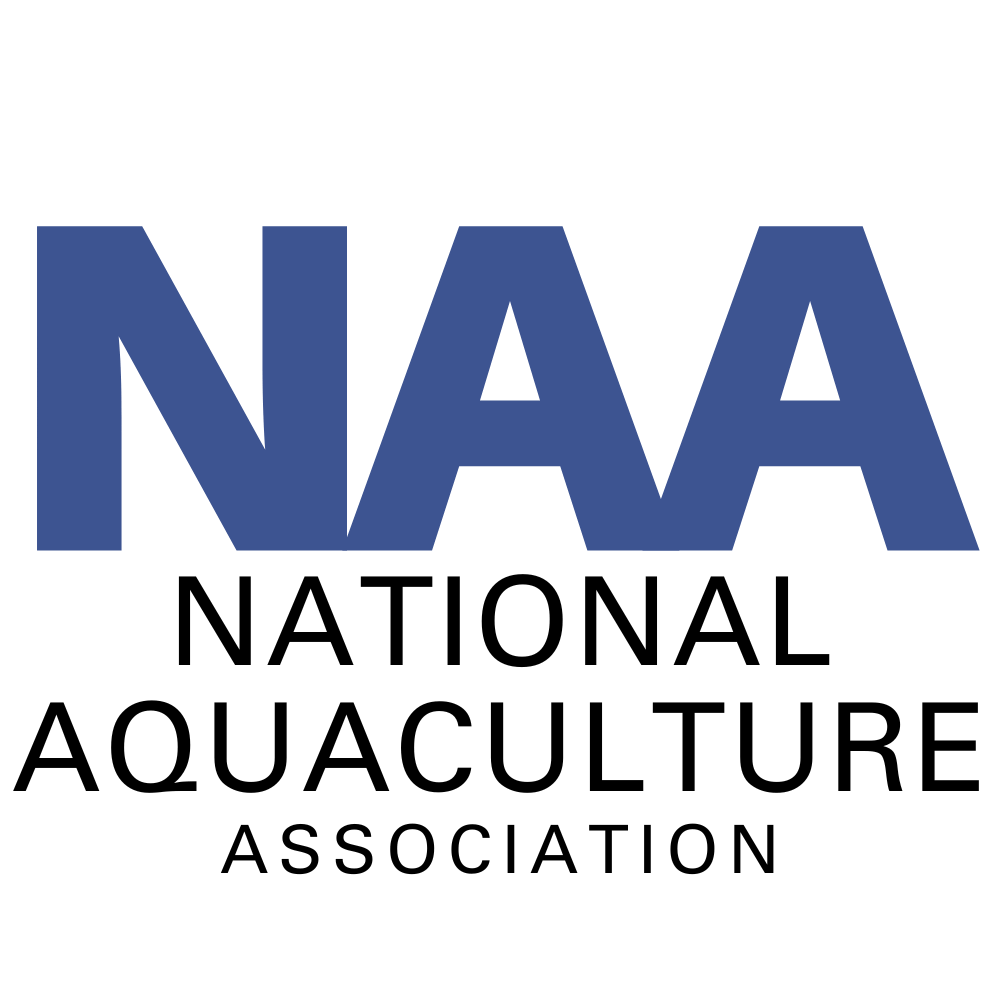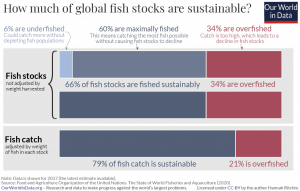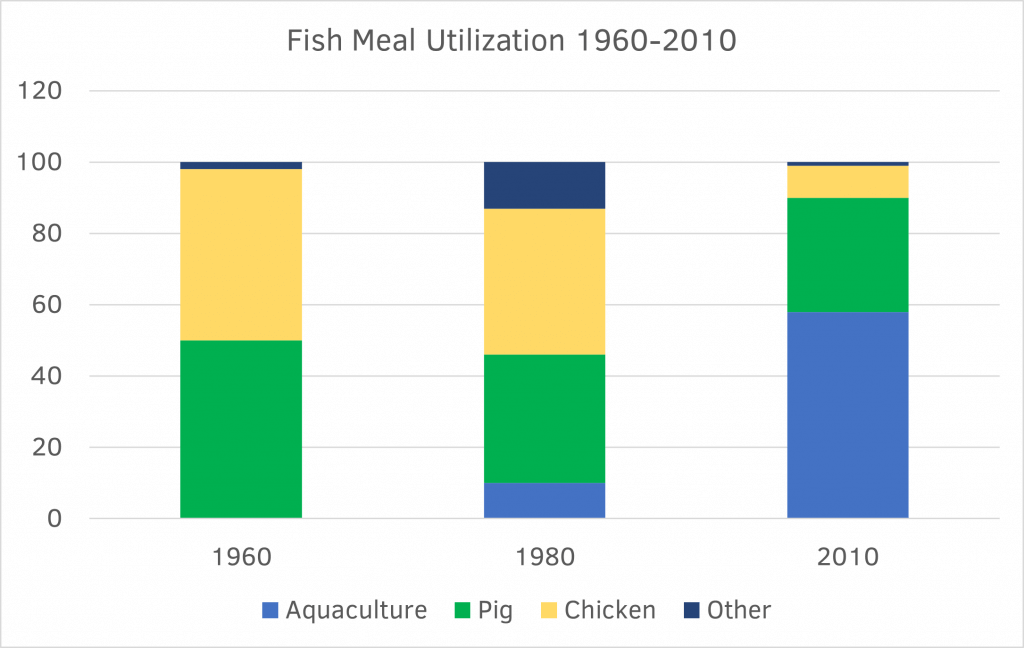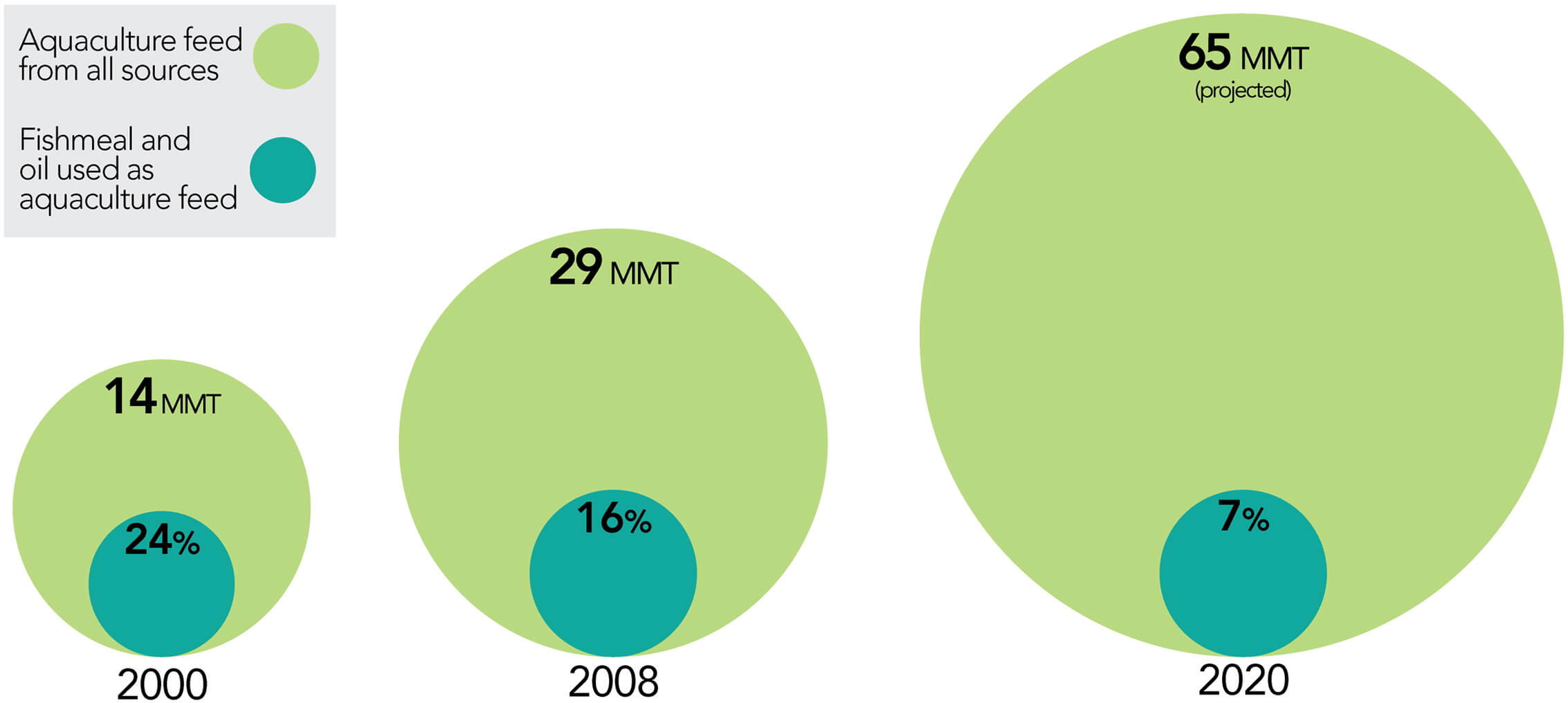U.S. Aquaculture is for our Environment
U.S. farms comply with strict laws that ensure environmental protection.
Local farm-raised seafood has a low climate footprint and protects wild stocks.
U.S. farm-rasied seafood is considered a best choice by many environmental groups.
Learn More About
Feed Sustainability
Fishmeal and fish oil is used in a variety of animal feeds including those for dogs and cats, poultry, swine, cattle, and fish. Fishmeal is produced from fish that people do not readily consume or from the by-products of seafood processing.
While the aquaculture industry is currently a primary user of wild fish oil and fish meal, the story is much more nuanced!
89% of all fisheries and aquaculture production is for human consumption, with only 8.9% utilized for fish meal and fish oil production. Total global fish meal and oil production is the same today as it was in 1970s. Aquaculture's boom in the 1990s peaked with aquaculture purchasing around 75% of total production. Prior to that time, other sectors utilized that same volume of fish meal and oil. The sustainable harvest of marine species for fish meal and fish oil has and will continue to occur, with or without aquaculture in the marketplace.
Remember that fish oil is the vital natural source (97%) of the healthy long chain omega-3 polyunsaturated fatty acids, EPA and DHA! While U.S. aquaculture farmers always seeks to improve sustainability, our top priority is providing the most nutricious seafood possible to our customers. Fish meal and fish oil production has remained stable and sustainable for decades. Learn more about U.S. aquaculture Health and Safety.
Aquaculture's utilization of fish meal and fish oil derived from marine capture has become far more efficient.
A significant but declining proportion of world fisheries production is processed into fishmeal and fish oil due to an increasing use of fishery by-products to produce fish meal and fish oil and advances in feed formulation, alternative protein development and aquaculture production. Farms around the world use less fish oil and fish meal today while producing more than 4 times the seafood by volume.
Within the United States considerable public and private research investment has been made with the goal of reducing the amounts of either ingredient in diets that will yield excellent animal health, growth and final products with desirable human nutritional benefits.
Fish In: Fish Out ratios are continuously improving!
Fish are one of the most efficient converters of feed into animal protein. The Fish In: Fish Out ratio is a term used to describe how many wild fish it takes to produce a farmed fish, and can be a reliable measure of aquaculture feed sustainability. For example, a 1:1 ratio means that 1 pound of wild fish produces 1 pound of farmed fish.
The IFFO reports that Total Fed Aquaculture in 2000 was 1:2.12 and after 20 years of aquaculture innovation, in 2020 that number has improved to 1:5.26! Meaning today on a global average for all fed aquaculture, 1 pound of wild fish to produce 2.12 pounds of farmed fish.
Even for carnivorous fish that require a high protein and oil in their diet, such as salmon, shrimp and marine fin fish, all fish in: fish out ratios are now below 1:1!




